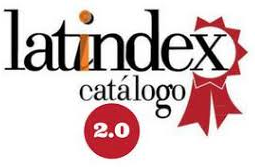El spread bancario frente a la regulación de tasas. / The bank spread facing the interest rate regulation.
DOI:
https://doi.org/10.37767/2468-9785(2016)002Palabras clave:
Rentabilidad bancaria, Política monetaria, Tasas de interés, Bank profitability, Monetary policy, Interest ratesResumen
Este trabajo busca analizar los efectos de la disposición de tasas activas máximas y tasas pasivas mínimas por parte del Banco Central de la República Argentina sobre el spread entre el cociente de ingresos financieros sobre los préstamos y el cociente de los egresos sobre los depósitos de los bancos privados que operaron en Argentina en el periodo 20122015. Luego de enumerar algunos modelos teóricos post-keynesianos para explicar cómo definen las diferentes tasas nominales los bancos comerciales, se analiza desde los estados financieros, como se comporto efectivamente el spread bajo las distintas regulaciones de la autoridad monetaria central. Los resultados demuestran que mas allá de las tasas máximas y mínimas, el spread efectivo no disminuyó, sino todo lo contrario.
ABSTRACT:
This paper aims to analyze the effects that maximum lending rates and minimum time deposit rates provided by the Central Bank of Argentina had on the spread between the ratio of financial income on loans, and the ratio of financial expenditures on the private banks deposits, operating in Argentina between 2012 and 2015. After reviewing some post-keynesians theories to explain how the commercial banks define the different nominal rates, this article analyzes, based on the financial statements, the actual spread behavior under the regulations of the central monetary authority. The results show that beyond the maximum and minimum rates, the effective spread does not decrease, but quite the opposite.
Referencias
AGUIRRE, H., BURDISSO, T., GRILLO, F., & GIUPPONI, E. (2015). “El spread de intermediación en una economía emergente bajo distintos regímenes macroeconómicos: Argentina, 1994-2013” Estudios BCRA Documento de trabajo 2015 64.
BLINDER, A. (1997) “Is there a core of practical macroeconomics that we should all believe?” American Economic Review, vol.87, no.2, May 1997.
CRESPO, E. & CARDOSO, M. (2011) “La teoría estatal de la moneda en el contexto internacional” en Nuevas miradas sobre economía heterodoxa Vol.2. INSECAP,UCES
CRIPPS, F., & GODLEY, W. (1976). “A formal analysis of the Cambridge economic policy group model”. Económica, 335-348.
DAVIDSON, P. (1982), “lnternational Money and the Real World”, London: Macmillan.
DE LUCCHI, J. (2012). “El enfoque de dinero endógeno y tasa de interés exógena. Reflexiones sobre la convertibilidad y la pos-convertibilidad argentina”. Cefidar, documento de trabajo, (44).
GODLEY, W. (1999), “Money and credit in a Keynesian model of income determination”, Cambridge Journal of Economics, 23 (4), 393-411.
GODLEY, W., & LAVOIE, M. (2004). “Features of a realistic banking system within a post-Keynesian stockflow consistent model”. Cambridge Endowment for Research in Finance.
GODLEY, W., & LAVOIE, M. (2007). “Monetary Economics: An Integrated Approach to Credit, Money, Income, Production and Wealth”, Palgrave MacMillan, New York.
GRASSO, F., & BANZAS, A. (2006). “El spread bancario en Argentina: un análisis de su composición y evolución (1995-2005)”. Documento de trabajo 11. CEFIDAR.
HICKS, JOHN. (1989). “A Market Theory of Money”. Oxford: Oxford University Press.
KALDOR, N. (1982). “The scourge of monetarism”. Oxford; New York: Oxford University Press.
KALECKI, M. (1937). “The principle of increasing risk”. Economica, 440-447.
KALECKI, M. (1971). “Selected essays on the dynamics of the capitalist economy 1933-1970”. CUP Archive.
KAM, E., & SMITHIN, J. (2012). “A simple theory of banking and the relationship between commercial banks and the central bank”. Journal of Post Keynesian Economics, 34(3), 547-552.
KEYNES, J. M. (1930). “A treatise on money”. New York: Harcourt, Brace and Company.
KEYNES, J. M. (1936), “The General Theory of Employment, Interest, and Money”. London: Macmillan.
KNAPP, G. F. (1905). “The State Theory of Money”. San Diego: Simon Publications.
KOUTSOYIANNIS, A. (1975). “Modern microeconomics”. Wiley.
LAVOIE, M. (2014). “Post-Keynesian Economics: New Foundations”. Edward Elgar Publishing.
MOORE, B. J. (1988). “Horizontalists and verticalists: the macroeconomics of credit money”. Cambridge University Press.
RANDALL, R. (1998), “Interest Rate Spreads in the Eastern Caribbean”, Fondo Monetario Internacional, Working Paper N° 98-59.
ROBERTSON, DENNIS H. (1940). “Essays in Monetary Theory”. London: P.S. King and Son.
ROBINSON, J. (1952). “The model of an expanding economy”. The Economic Journal, 62(245), 42-53.
ROBINSON, J. (1956). “The accumulation of capital”. London: Macmillan.
ROCHON, L. P. (2001). “Horizontalism: setting the record straight. En Credit, Interest Rates and the Open Economy. Essays in Horizontalism”. Edward Elgar Publishing.
RODRIGUEZ USE, J. & WEIGANDI, I. (2014) “Encrucijadas del BCRA”. Congreso de Economía Política CCC-Unqui
RODRIGUEZ USE, J. & WEIGANDI, I. (2015) “Informe de Coyuntura Económica N° 6, Junio 2015”. Observatorio de Políticas Públicas de la Universidad Nacional de Avellaneda.
ROMER, D. (2000) “Keynesian macroeconomics without the LM curve”, Journal of Economic Perspectives, 14 (2).
SMITHIN, J. (2015) “Interest Rates, Liquidity Preference, and Endogenous Money in an Alternative Monetary Model”. Unpublished manuscript.
TAYLOR, J.B. (1999) “A Historical Analysis of Monetary Policy Rules”, in J.B. Taylor, ed., Monetary Policy Rules, Chicago: U. of Chicago Press, 1999.
WRAY, RANDALL (2006) “When are Interest Rates Exogenous?” in Mark Setterfield ed. Complexity, Endogenous Money, and Macroeconomic Theory”. Essays in Honor of Basil J. Moore, Northampton, MA: Edward Elgar, pp. 271-89.










